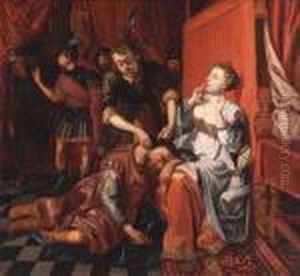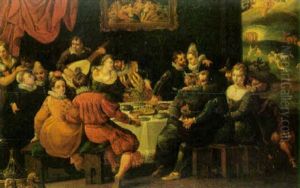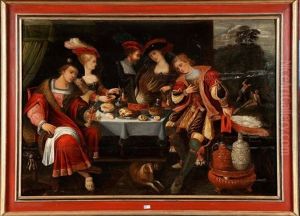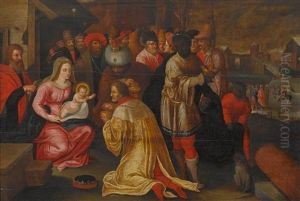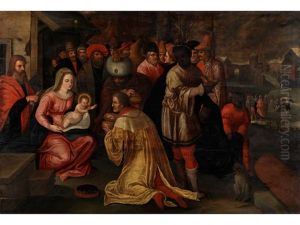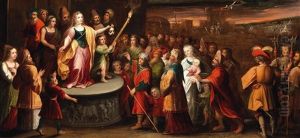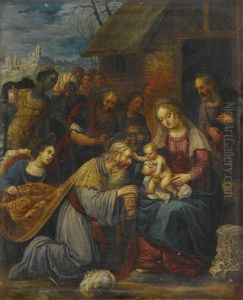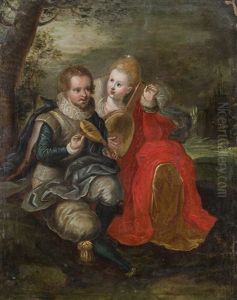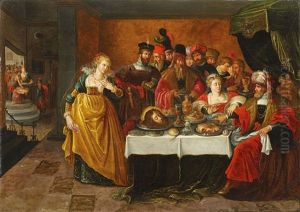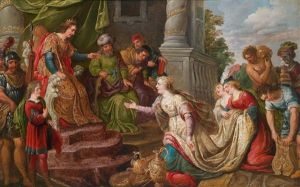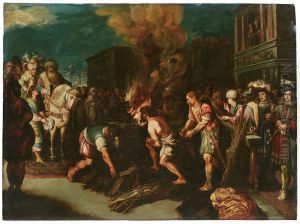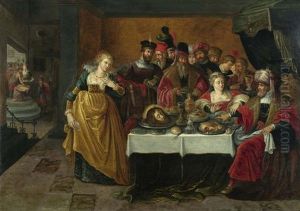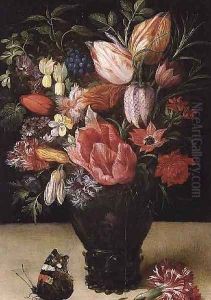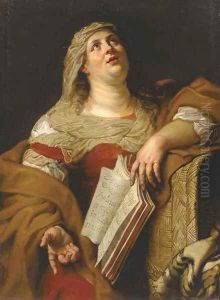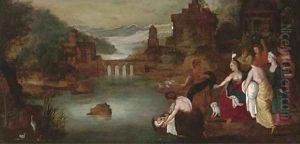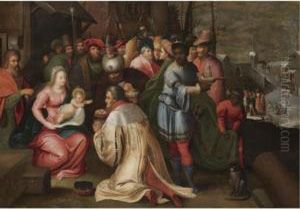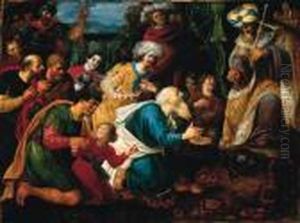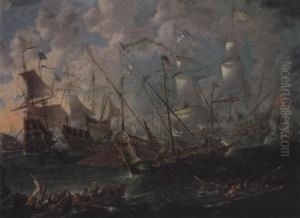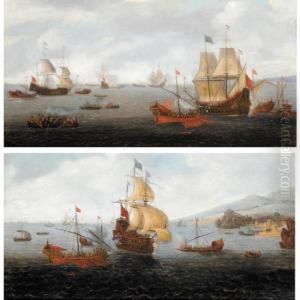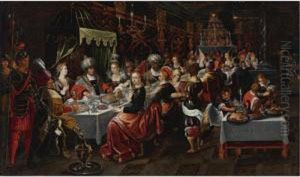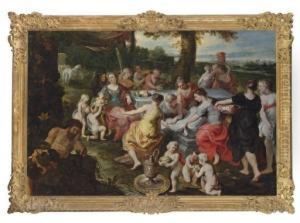Kasper or Gaspar van den Hoecke Paintings
Kasper (or Gaspar) van den Hoecke was a Flemish Baroque painter who was born around 1585. His place of birth is not precisely documented, but he was active mainly in Antwerp. Van den Hoecke initially trained with his father, also a painter named Jan van den Hoecke. He later became a master in the Antwerp Guild of St. Luke in 1609, which was an association of painters, sculptors, and other artists in the city.
Van den Hoecke's work was influenced by the prominent artists of his time, including Peter Paul Rubens, with whom he collaborated on several occasions. His oeuvre primarily consists of religious and mythological scenes, portraits, and genre scenes. He was known for his skillful use of chiaroscuro and his ability to render figures and scenes with a dramatic intensity.
During his career, Van den Hoecke enjoyed the patronage of prominent figures and was appointed court painter to Archduke Albert and Infanta Isabella, who were the sovereigns of the Spanish Netherlands. This position allowed him to receive commissions for various important projects, including decorations for their residences and for public festivities.
Despite his success, not much is known about Van den Hoecke's life, and many of his works have been lost or remain unidentified. His style was influential in the development of Flemish Baroque painting, and his sons, Robert and Jan van den Hoecke, also became notable artists in their own right. Kasper van den Hoecke died in 1648 in Antwerp. His contributions to the era's art scene continued to be acknowledged by art historians, although his fame was somewhat eclipsed by the towering figures of Rubens and Anthony van Dyck.
